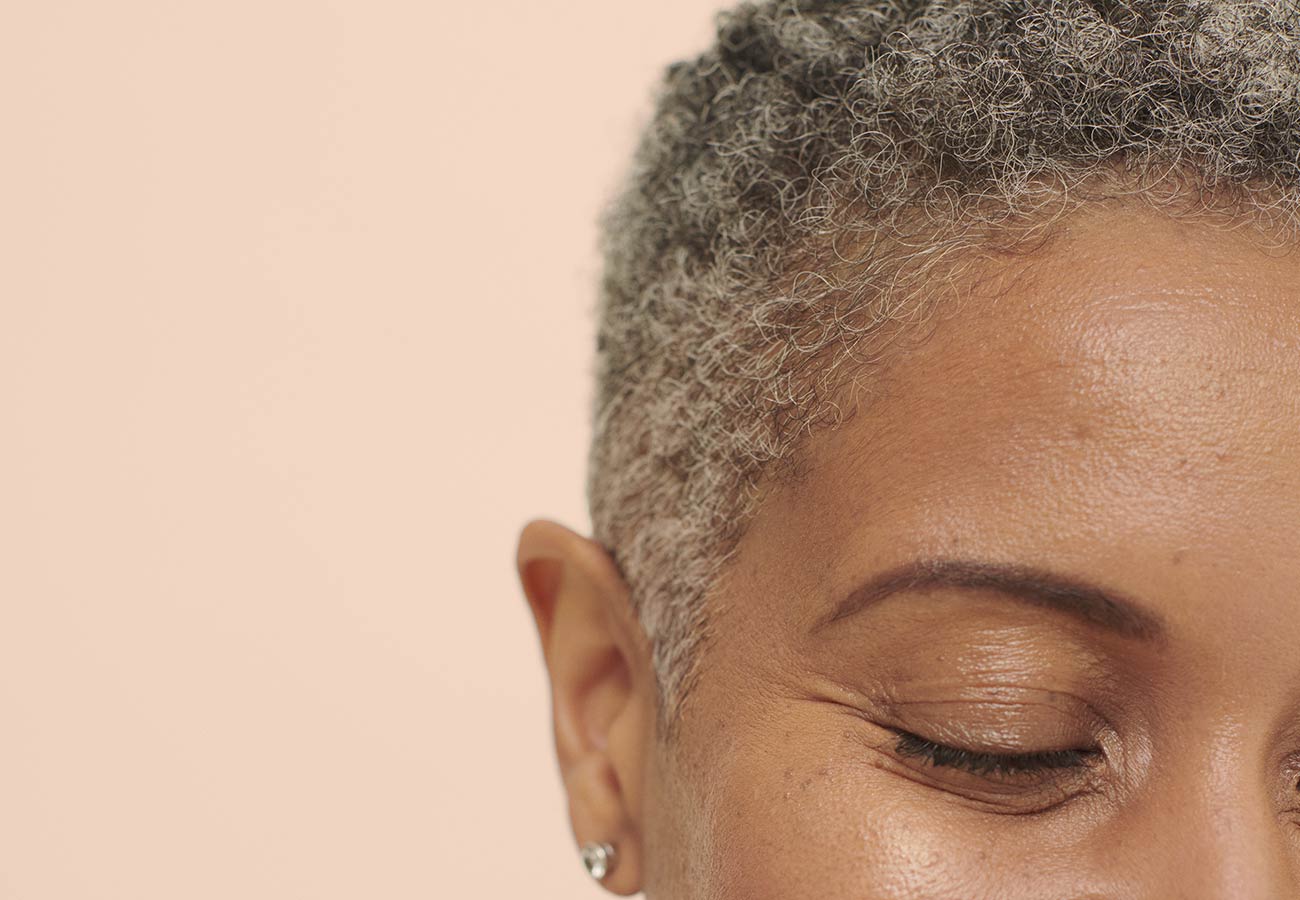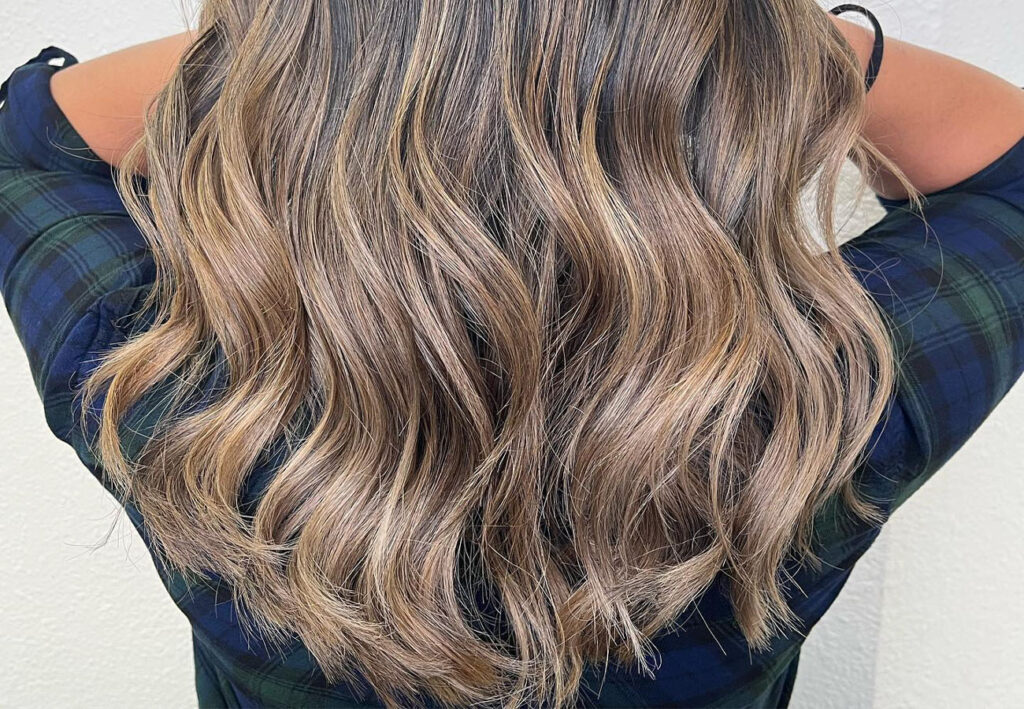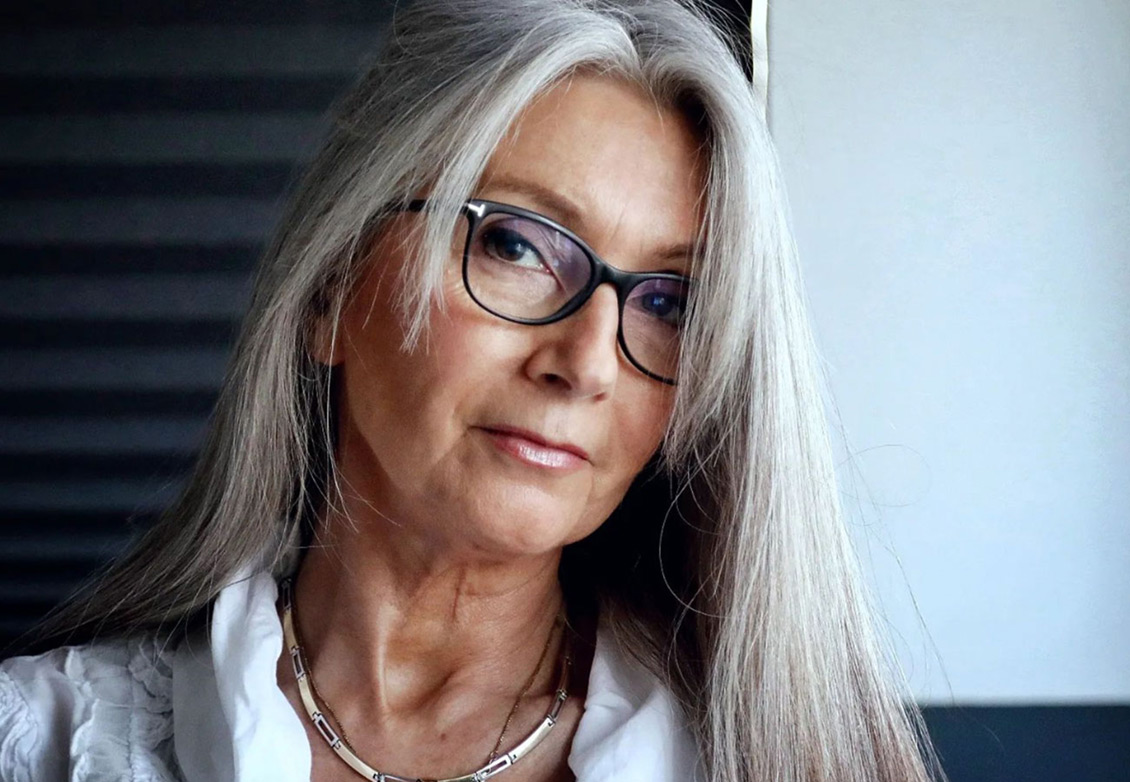The shaved head is having a moment, and not just because of quarantine (although lack of frequent contact with our hairdressers has certainly assisted in the process of mainstreaming the style). Over the past several years, we’ve seen household—and hetero—names like Katy Perry and Jennifer Hudson rock the shaved head, still with a face full of makeup and in high heels. But when did the shaved head go from a look that’s seen as strictly queer and masculine to something more versatile, normative, and even feminine?
Within the queer and lesbian community, there’s a rich history of hair as signifier. Hair is used as a tool of self-expression—whether someone identifies as butch, femme, futch, soft butch, stone butch, stud, transmasculine, high femme, low femme, or pretty much anything in between (and that is by no means an exhaustive list). For queer women, shaved heads, buzz cuts, close crops, or dramatic undercuts were once shorthand for butch, defined traditionally in lesbian culture as a woman who presents in a typically ‘masculine’ manner. According to Stonewall UK, “Being butch is about playing with and challenging traditional binary male and female gender roles and expressions,” and hair has historically played a major role in that expression—especially cutting, or shaving, it off.
While there’s no one definitive butch hairstyle (cc Shane from The L Word or all the folks photographed for Kerry Manders’s NY Times piece “The Renegades,” featuring 22 of the most influential butches and studs in media today), it’s widely accepted that the drastic shortening of a woman’s hair is a defiant act, meant to rebuff constrictive gender roles and expectations.
As the shaved look continues to grow in popularity and extend from the queer community to the rest of the world, however, the mysticism of a woman’s shaved head is waning. What has traditionally conjured images of radical change—of personal growth or complete agency over one’s own appearance—is perhaps becoming rote.
But the shaved head didn’t necessarily start out as a queer signifier. And now that the look has in turn been adapted by feminine-presenting women (not all of whom identify as queer), the symbolism of the shaved head is changing yet again, as it has countless times throughout history. So if we want to understand the true symbolic power of a woman’s shaved head, we must look back in time, everywhere from ancient Egypt to Friends’ Central Perk.
Since as long as we’ve recorded history, the shaving of a woman’s head has symbolized different things around the world. Scissors and razors have been recovered from archaeological sites in Ancient Egypt, recognized as the first society to implement ritual head-shaving, mostly for hygienic concerns. It’s thought that head-shaving was a widely adopted practice for women and men, especially priests, and that most people would simply wear wigs over their bald heads to avoid lice. So yes, Cleopatra’s fierce shoulder-length bob was likely a wig.
In the centuries to come, a woman’s shaved head was used as a sign of religious purification: see Joan of Arc, who was shaved before being burnt at the stake for cross-dressing, or St. Rose of Lima, remembered for her piety and chastity, who allegedly shaved her own head to keep male suitors away. She’s also said to have worn a crown of 99 thorns to permanently scar her scalp as penance to God. The shaved head is also characteristic of religious figures in Buddhism, Islam, and in a number of Hindu and Jewish practices.
But a shaved head has also historically been used as a weapon of shame and control. Slaves forcibly brought to the U.S. from Africa often had their heads shaved before being sold into labor. This was justified as a hygienic concern, although observers of history believe it was an attempt to further dislocate slaves from their former lives and cultures, wherein intricate social customs and distinctions (such as wealth and status) were communicated through hair styling, especially across West Africa.
Centuries later, scandals rose around the ill treatment of women and girls in certain halfway houses, alleged by inmates and news reporters of the time. One prominent example was of late 19th-century teen captive Annie Sigalove, who was among hundreds of “wayward” women and girls locked up at the House of Mercy at Inwood in New York City for crimes ranging from prostitution to dancing in public. A common punishment for the inmates was head-shaving. Said one nun to a NY Times reporter in 1895, “We find the girls do not like to lose their hair. Fear of having it cut off makes them obedient.” Sigalove eventually filed a habeas corpus grievance that caught the attention of the public.
More recently, pop culture has relied on a woman’s shaved head as the butt of many jokes. 2007 Britney with her shaved head and umbrella was a meme before memes existed. There was also Bonnie on Friends, Ross’s short-lived love interest who shaves her head during an episode at the beach. The image of her shiny, alien-like bald head—and Ross’s horrified reaction to it!—were very telling and left have forever been burned into my brain. Of course in the 80s and 90s, there were rare cases of women purposefully (and powerfully) using their shaved heads in direct defiance of beauty standards and gender roles, like icons Grace Jones and Sinead O’Connor (now Shuhada Sadaqat), who both made major waves with their shorn looks. In her memoirs, super model and pop star Jones writes, “My shaved head made me look more abstract, less tied to a specific race or sex or tribe. I was black, but not black; woman, but not woman; American, but Jamaican; African, but science fiction.”
But as more and more queer and normative figures alike adopt the look today, the shaved head has gained momentum in the mainstream and expanded from Grace Jones’s radical symbol of androgyny to something that can be read in a multitude of ways—including as feminine. Beloved lesbian/queer and shaved-head icons like Lena Waithe, Cara Delevingne, Kristen Stewart, and Amandla Stenberg have assisted in that transition, as well as non-queer stars like Kate Hudson and Jessie J.
So maybe the shaved head isn’t as radical as it once was. Or maybe it’s become radical in all new ways, as a sort of transgressive blank canvas for femmes, butches, futches, and normies to play with—all with the understanding that while the shaved head has deep historical roots, it truly does mean something different to everyone.





